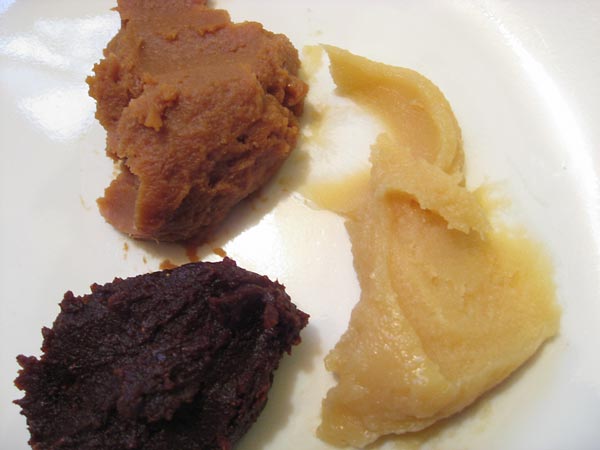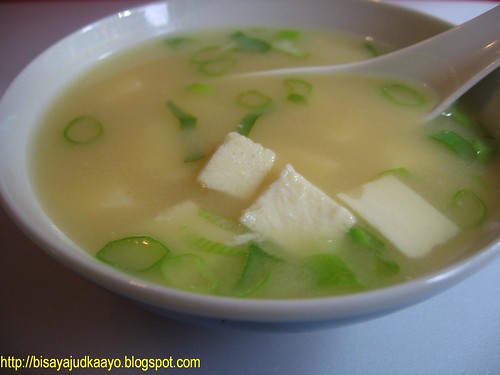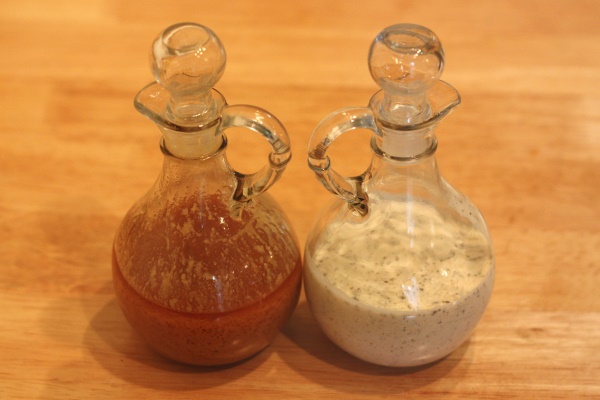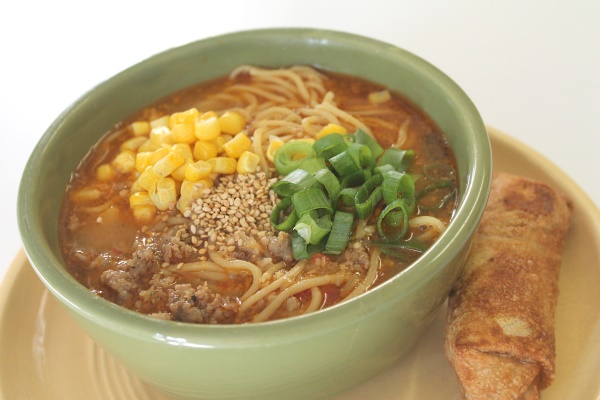
Another Japanese ingredient I can’t live without is wonderfully savory miso! Like soy sauce it is made from fermented soy beans and grains, but miso comes in the form of a paste and has a very different flavor. Bonus: It’s pretty darn good for you too! You can find many varieties of miso in the refrigerated section of an Asian market.

But which kind to get? Miso develops a darker color and flavor the longer it is aged. White miso (shiro) has the lightest flavor, then red (akai) miso is stronger, and there is even black miso, which gives a concentrated punch to soups and stews. There are also variations where the soy beans are mixed with different grains for different tastes, just to make things a little more confusing! I like to just buy Awase miso, which is a combination of white and red, and use it when a recipe calls for either one. (Vegetarians, beware that a lot of miso is mixed with dashi that contains fish, so check the labels)

Miso Soup ~
The most traditional use for miso is in miso soup, which you’ve probably been served if you’ve ever eaten lunch at a Japanese restaurant. This soup is so common in Japan, most people eat it every day, and it is usually eaten along with a bowl of rice for breakfast!
You can throw just about anything in miso soup, other than that bowl of rice. Rice in miso soup is a bit taboo and referred to as “cat food”, so you’ll have to enjoy that delicious dish in the privacy of your own home. In the US I usually see miso soup with cubed tofu, wakame seaweed, and green onion slices. Using the dashi granules I mentioned in this post, you can make a similar bowl of soup with :
1 ½ cups water
½ tsp. dashi granuals
Handful of extra firm cubed miso, squeeze to drain
1 ½ Tbsp. miso (awase, shiro, or akai)
½ green onion, sliced thin
Pinch of dried wakame seaweed (optional)
Heat the water, dashi, and tofu cubes until just boiling, then remove from heat and stir in the remaining ingredients. (Dashi loses some of it’s flavor and health benefits when heated, so you want to avoid boiling it when possible.)
I find it easiest to mix in the thick miso paste by spooning a little of the dashi broth into your soup bowl, stirring in the miso until well combined, then pouring the rest of the soup into your bowl. Miso settles, so you’ll want to give the broth a stir before serving or eating.
Once you have a tub of miso on hand, there are so many ways to use it! Here are a few recipes where I've used it in the past (click on the pics for more info) ~




No comments:
Post a Comment